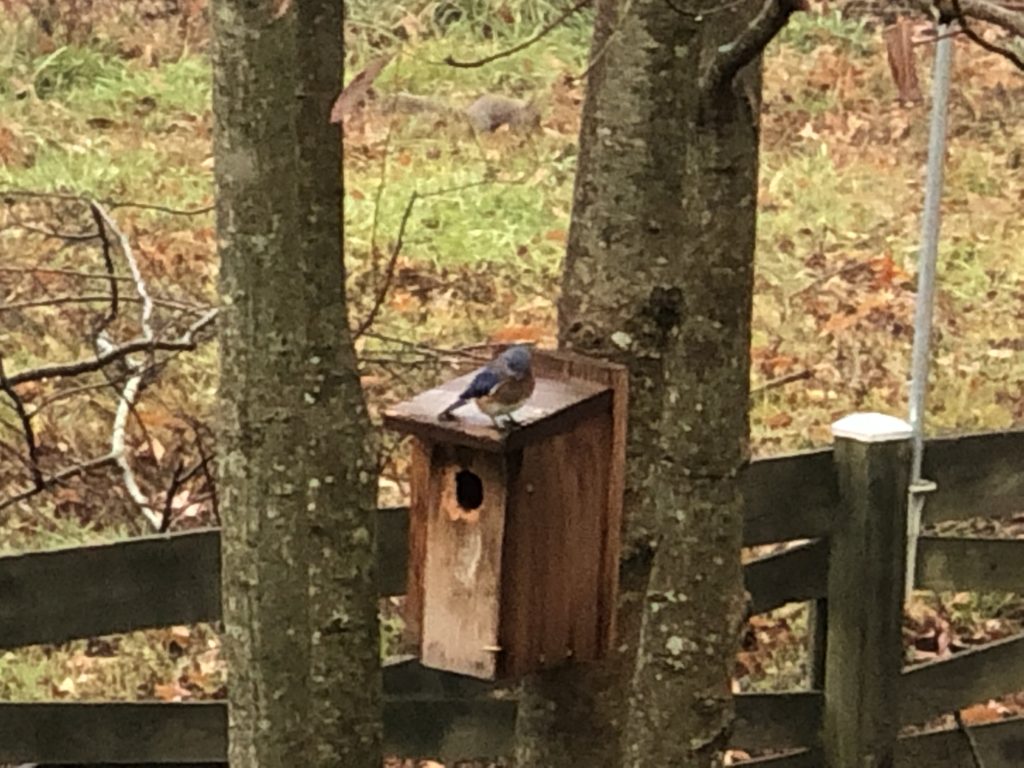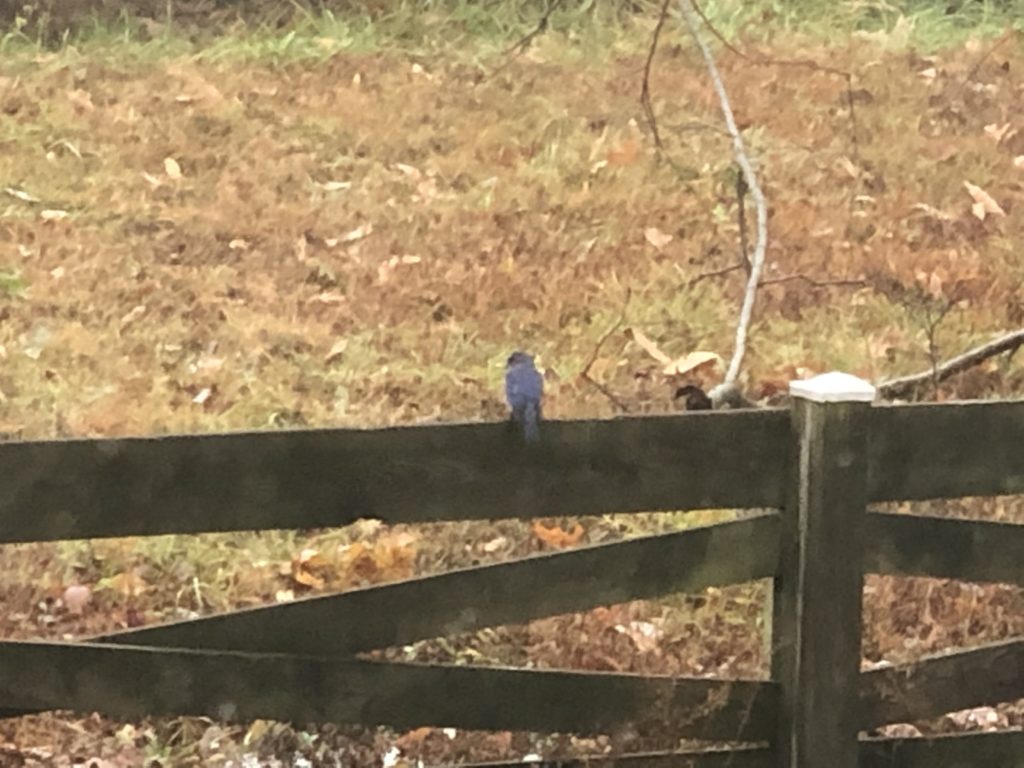bluebird of happiness

I suppose everyone has a favorite bird. Well, I have two. Interestingly- both are named “Blue”- bluebird and blue heron.
Blue is not my favorite color, but I sure do find these bluebirds a beautiful sight. This is not new, but every time I see one in the yard or in a watercolor or flying by- my heart flutters. I am truly in love with the sight of them.
Maybe, I like them because I like all birds who “mate for life”. Although the experts can’t say if they do, the acknowledge that “Bluebirds do form pair-bonds during the breeding season. They are generally “socially monogamous,” meaning that a single male and female form a basic social unit in breeding territory.” That’s close enough for me!
Another thing is that they are polite birds. They do not fight over food. They gather their food and discretely return to their home. In fact, they are often taken advantage of by other more pesky birds. So, I put out bluebird boxes to shelter these lovelies.
It’s not that easy to coax them to your yard. If something bad happens at a nest box, they remember and refuse to return. We had one sad experience where a mother bluebird was feeding her little baby birds and Emmy-the family cat took it upon herself to kill momma bluebird. We tried to save the babies, by taking them to a rescue, but we are not sure what happened to them. It’s an awful memory and one that the birds recall to this day. That nest box has never had a second family. It stands as a memorial.

How did the phrase “bluebird of happiness” come up? ”somewhere over the rainbow, bluebirds fly…” was in The Wizard of Oz.
Bluebird is globally accepted as a symbol of happiness, joy, good health, the renewal of spring and positive feelings.
The Blue Bird (French: L’Oiseau bleu) is a 1908 play by Belgian playwright and poet Maurice Maeterlinck. It premiered at a Moscow Art Theater and was presented on Broadway in 1910. The French composer Albert Wolff wrote an opera based on the original play that was first performed at the New York Metropolitan Opera in 1919 .(Wikipedia)
The story begins with two children, Tyltyl and Mytyl, who are sent out by the fairy Bérylune into various lands (land of memory, palace of night, kingdom of the future…) to search for the Bluebird of Happiness. Returning home empty-handed, the children see that the bird has been in a cage in their home the whole time. When Myltyl gives the bird as a present to a sick neighbor child, the bird flies away. But the moral is that the search for happiness is ongoing, and it is to be found within oneself.
Well, you learn something new everyday. I have thought of this phrase over the years and believed in “the bluebird of happiness” but never have I seen the play, heard the opera, read the book or followed the story that came out before my time. How nice!!

Comments are closed, but trackbacks and pingbacks are open.